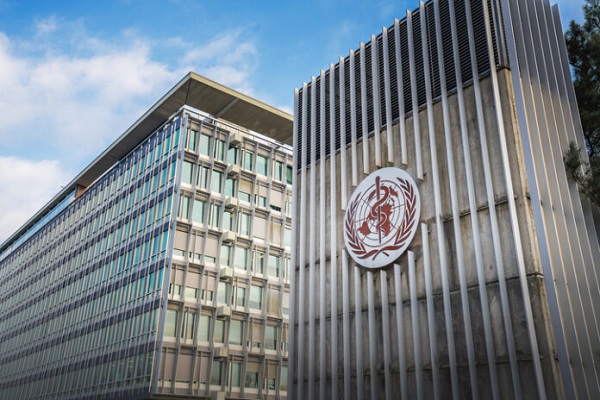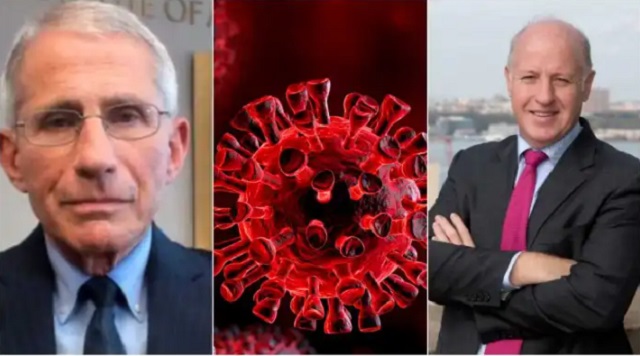Opinion
A rural response to Gerald Stanley’s acquittal from a Saskatchewan farmer..

As a person who lives on a farm in rural sask. I can offer the following insights into rural realities. I only speak for myself and my family. I don’t claim to know what I would or wouldn’t do if I was in the Stanley’s situation, nor if I was in that vehicle with Colton. I hope I never have to find out. I don’t know what life is like on farms in other places, I can’t speak to that.
I can only offer what knowledge I have of rural life…
1. If you live on a farm you are responsible for everything yourself. Snow removal, garbage disposal, water, sewer, security and safety. If your house starts on fire it’s very unlikely that the FD will arrive in time to save it. If you have a heart attack it’s very unlikely that the EMTs will arrive in time to save you. And if your family is attacked it is very unlikely that the RCMP will arrive in time to save you. You are basically on your own. I don’t feel that to say that the Stanleys could have locked themselves in the house and called the police is very reasonable. They weren’t in the house, they were all over the yard. Maybe their door didn’t even lock. Had they been in the house already they may have just hid there like their neighbor did. We can’t know either way. And where I live the earliest RCMP response would be greater than 30 mins. A lot can happen in 30 mins.
2.Anyone who enters a farmer’s property with the intent to steal from or threaten the occupants should be aware of the likely presence of weapons. All of the farmers I know have guns. More than one. Some have many. They aren’t solely or primarily for protection from would be thieves or attackers. some people collect guns, some people enjoy target shooting or hunting. On a farm it is pretty much necessary to have a gun. Where we live there are coyotes, raccoons, cougars, wolves, wild boars etc. An aggressive or rabid animal can attack your family dogs or a beloved animal may be injured or sick and need your mercy. It’s just a rural reality. But a gun can kill people just as easily as animals so everyone should just be aware that on farms there are usually guns.
3. The reasons farmers are easy targets for crime are the very same reasons they are often forced to deal with it on their own. Essentially no effective police response and isolation.
I don’t live in an area with a lot of rural crime. We’ve been robbed before and neighbors have had vehicles stolen and equipment vandalized but I would not say it’s a regular occurrence. Regardless, I have fears. I fear that this far from town someone will get injured or have a heart attack so I have our land location written by the phone and I took CPR. I fear that a snowstorm will take out our power and block our roads so we have a genset and snow moving equipment. I fear that our sewer will back up so we have an alarm and an extra pump. And I fear that if someone came into my yard with the intent or ‘the perceived intent’ to hurt my family the police would be of no help. So we have dogs, and locks on all our doors. And guns. And when guns get involved people can get hurt or killed. My point is we have to take extra precautions for things that urban people are comfortable letting ‘the professionals’ handle. Most farmers, most men actually, will do what they feel is necessary to protect their families and deal with the consequences later. No one wants to be in that position but when you live on a farm you are. You can not depend on anyone else to protect you or save you.
When people are intoxicated their judgement is impaired and they do not act or react in a predictable way. And it is safe to say when people are scared their judgement is impaired and they do not act or react in a predictable way. It’s very unfortunate that this tragedy happened at all and I feel terribly sad for all involved.
Regan from Saskatchewan
Great Reset
Biden Administration Eager to Sign WHO Pandemic Treaty

From Heartland Daily News
By Bonner Russell Cohen, Ph.D.
The Biden administration signaled its support for the World Health Organization’s (WHO) new pandemic treaty expected to be finalized at its World Health Assembly in Geneva, Switzerland, the final week of May.
Pamela Hamamoto, the State Department official representing the United States at the meeting, stated that “America is committed to signing the treaty that will ‘build a stronger global health structure,’” wrote John Tierney, a senior fellow at the Manhattan Institute and a contributing editor, in the City Journal.
Adoption of a legally binding pact governing how countries around the world are to respond to future outbreaks like the recent COVID-19 pandemic has been the goal of WHO-directed negotiations since 2021. The WHO, a United Nations-sponsored organization, came under sharp criticism for its handling of the coronavirus.
On May 8, attorneys general from 22 states sent President Biden a letter saying they oppose the accords which will turn the WHO into the “world’s governor of public health.” The letter says giving the WHO such authority violates the U.S. Constitution, and could lead to censorship of dissenting opinions, undermine Constitutional freedoms, and give the WHO power to declare any “emergency” besides health including climate change, gun violence, and immigration.
Missteps on COVID-19
In a post on Twitter (now X) on January 14, 2020, the WHO stated: “Preliminary investigations conducted by the Chinese authorities have found no clear evidence of human-to-human transmission of the novel #coronavirus (2019-nCoV) identified in #Wuhan, #China.”
Two weeks later, on January 30, 2020, WHO’s Emergency Committee issued a Public Health Emergency of International Concern (PHEIC), stating, “The Committee emphasized that the declaration of a PHEIC should be seen in the spirit of support and appreciation of China, its people, and the actions China has taken on the front lines of this outbreak, with transparency and, it is to be hoped, success.”
The WHO’s initial investigation into the origins of COVID-19 concluded it was improbable that the virus resulted from experiments at the Wuhan Institute of Virology, though it later acknowledged that it could have come from a lab leak at Wuhan. The WHO’s investigation, which was thwarted by Chinese officials, ultimately reached no conclusion. President Trump announced the United States’ withdrawal from the WHO, a decision reversed by President Joe Biden on January 20, 2021.
More Smoke and Mirrors
Further undermining the WHO’s credibility in setting policies on managing a future pandemic, the group decided to include Peter Daszak, president of the New York-based EcoHealth Alliance, in its initial investigation into the origins of COVID-19.
Daszak and EcoHealth Alliance prominently featured in an investigation by the U.S. House Select Subcommittee on the Coronavirus Pandemic into the government’s funding and lack of oversight of gain-of-function research at the Wuhan lab, for which EcoHealth received grants from the National Institute of Allergy and Infectious Diseases and the National Institutes of Health.
In an interim report released on May 1, 2024, the subcommittee said there is “significant evidence that Daszak violated the terms of the NIH grant awarded to EcoHealth. Given Dr. Daszak’s apparent contempt for the American people and disregard for legal reporting requirements, the Select Subcommittee recommends the formal debarment of and a criminal investigation into EcoHealth and its President.”
After the release of the report, U.S. Rep. Tom Emmer (R-MN) told the Washington Examiner, “The World Health Organization covered up the Chinese Communist Party’s role in developing and spreading COVID-19 and has since failed to hold them accountable for the global pandemic that killed millions, upended our daily lives, and destroyed thousands of small businesses.”
Public Fed Up
The WHO’s shaky record on COVID, including its close ties to China and Peter Daszak, have taken a toll on the public’s willingness to accept its leadership in any future pandemics.
A poll conducted by McLaughlin & Associates for the Center for Security Policy, released on April 17, found that 54.6 percent of likely voters oppose tying the United States to a WHO pandemic treaty, and just 29.0 percent favor such a move.
Agreements Bypass Congress
While providing few details, at the World Economic Forum in Davos, Switzerland in January, WHO Director General Tedros Ghebreyesus said, “The pandemic agreement can bring all the experience, all the challenges we have faced and all the solutions into one. That agreement could help us prepare for the future in a better way.”
The “treaty” the Biden administration is eager to sign will likely be an executive agreement, like the 2015 Paris Climate Agreement, which was not presented to the U.S. Senate for ratification but contained “commitments” President Barack Obama pledged to honor.
Also in the works in Geneva are amendments to International Health Regulations, which Congress would not approve or disapprove.COVID
WHO’s Power Grab
Sen. Ron Johnson (R-WS), sent a letter to President Biden signed by all 49 Republican senators, expressing their concern about the powers that could be handed to WHO, on May 2.
“Some of the over 300 proposals for amendments made by member states would substantially increase the WHO’s emergency powers and constitute intolerable infringements upon U.S. sovereignty,” the letter states.
Craig Rucker, president of the Committee for a Constructive Tomorrow (CFACT), who has attended UN-sponsored conferences around the world for over 30 years, says the WHO is a destructive force.
“WHO’s performance during COVID-19 was a lethal combination of incompetence and dishonesty,” said Rucker. “The organization failed to protect public health and went to extraordinary lengths to cover up China’s role in fostering gain-of-function research at the Wuhan lab. Ratification of any WHO pandemic treaty would be nothing short of a travesty.”
Bonner Russell Cohen, Ph.D. ([email protected]) is a senior fellow at the National Center for Public Policy Research.
Energy
New Report Reveals Just How Energy Rich America Really Is

 From the Daily Caller News Foundation
From the Daily Caller News Foundation
A new report by the Institute for Energy Research (IER), a nonprofit dedicated to the study of the impact of government regulation on global energy resources, finds that U.S. inventories of oil and natural gas have experienced stunning growth since 2011.
The same report, the North American Energy Inventory 2024, finds the United States also leading the world in coal resources, with total proven resources that are more than 53% bigger than China’s.
Despite years of record production levels and almost a decade of curtailed investment in the finding and development of new reserves forced by government regulation and discrimination by ESG-focused investment houses, America’s technically recoverable resource in oil grew by 15% from 2011 to 2024. Now standing at 1.66 trillion barrels, the U.S. resource is 5.6 times the proved reserves held by Saudi Arabia.
The story for natural gas is even more amazing: IER finds the technically recoverable resource for gas expanded by 47% in just 13 years, to a total of 4.03 quadrillion cubic feet. At current US consumption rates, that’s enough gas to supply the country’s needs for 130 years.
“The 2024 North American Energy Inventory makes it clear that we have ample reserves of oil, natural gas, and coal that will sustain us for generations,” Tom Pyle, President at IER, said in a release. “Technological advancements in the production process, along with our unique system of private ownership, have propelled the U.S. to global leadership in oil and natural gas production, fostering economic benefits like lower energy prices, job growth, enhanced national security, and an improved environment.”
It is key to understand here that the “technically recoverable” resource measure used in financial reporting is designed solely to create a point-in-time estimate of the amount of oil and gas in place underground that can be produced with current technology. Because technology advances in the oil and gas business every day, just as it does in society at large, this measure almost always is a vast understatement of the amount of resource that will ultimately be produced.
The Permian Basin has provided a great example of this phenomenon. Just over the past decade, the deployment of steadily advancing drilling and hydraulic fracturing technologies has enabled producers in that vast resource play to more than double expected recoveries from each new well drilled. Similar advances have been experienced in the other major shale plays throughout North America. As a result, the U.S. industry has been able to consistently raise record overall production levels of both oil and gas despite an active rig count that has fallen by over 30% since January 2023.
In its report, IER notes this aspect of the industry by pointing out that, while the technically recoverable resource for U.S. natural gas sits at an impressive 4.03 quads, the total gas resource in place underground is currently estimated at an overwhelming 65 quads. If just half of that resource in place eventually becomes recoverable thanks to advancing technology over the coming decades, that would mean the United States will enjoy more than 1,000 years of gas supply at current consumption levels. That is not a typo.
Where coal is concerned, IER finds the US is home to a world-leading 470 billion short tons of the most energy-dense fossil fuel in place. That equates to 912 years of supply at current consumption rates.
No other country on Earth can come close to rivaling the U.S. for this level of wealth in energy mineral resources, and few countries’ governments would dream of squandering them in pursuit of a political agenda driven by climate fearmongering. “And yet, many politicians, government agents, and activists seek to constrain North America’s energy potential,” Pyle says, adding, “We must resist these efforts and commit ourselves to unlocking these resources so that American families can continue to enjoy the real and meaningful benefits our energy production offers.”
With President Joe Biden and former President Donald Trump staking out polar opposite positions on this crucial question, America’s energy future is truly on the ballot this November.
David Blackmon is an energy writer and consultant based in Texas. He spent 40 years in the oil and gas business, where he specialized in public policy and communications.
-

 COVID-192 days ago
COVID-192 days agoCOVID Lab Leak: Over four later, EcoHealth Alliance funding is finally suspended
-

 COVID-192 days ago
COVID-192 days agoNIH Quietly Altered Definition For Gain-Of-Function Research On Its Website, Former Fauci Aide Confirms
-

 Business2 days ago
Business2 days agoOttawa should end war on plastics for sake of the environment
-

 Opinion1 day ago
Opinion1 day agoOrdinary working Canadians are not buying into transgender identity politics
-

 Energy1 day ago
Energy1 day agoNew Report Reveals Just How Energy Rich America Really Is
-

 Automotive24 hours ago
Automotive24 hours agoBiden’s Climate Agenda Is Running Headfirst Into A Wall Of His Own Making
-

 Great Reset22 hours ago
Great Reset22 hours agoBiden Administration Eager to Sign WHO Pandemic Treaty
-

 Economy22 hours ago
Economy22 hours agoFeds spend $3 million to fly 182 politicians and bureaucrats to climate conference








You must be logged in to post a comment Login